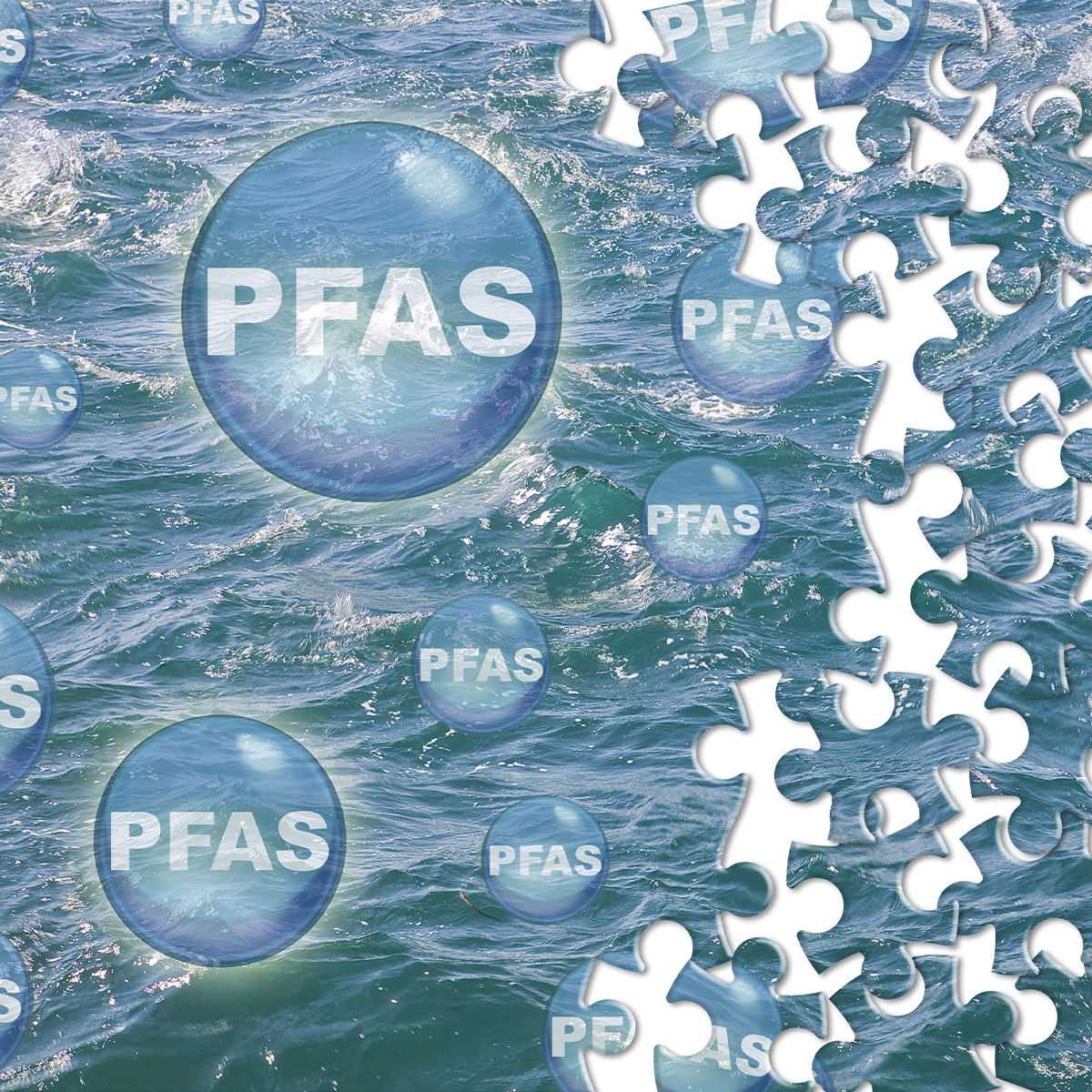-
Property & Casualty
Property & Casualty Overview

Property & Casualty
We offer a full range of reinsurance products and the expertise of our talented reinsurance team.
Expertise
Publication
Structured Settlements – What They Are and Why They Matter
Publication
PFAS Awareness and Concern Continues to Grow. Will the Litigation it Generates Do Likewise?
Publication
“Weather” or Not to Use a Forensic Meteorologist in the Claims Process – It’s Not as Expensive as You Think
Publication
Phthalates – Why Now and Should We Be Worried?
Publication
The Hidden Costs of Convenience – The Impact of Food Delivery Apps on Auto Accidents
Publication
That’s a Robotaxi in Your Rear-View Mirror – What Does This Mean for Insurers? -
Life & Health
Life & Health Overview

Life & Health
We offer a full range of reinsurance products and the expertise of our talented reinsurance team.

Publication
Key Takeaways From Our U.S. Claims Fraud Survey
Publication
Favorite Findings – Behavioral Economics and Insurance
Publication
Individual Life Accelerated Underwriting – Highlights of 2024 U.S. Survey
Publication
Can a Low-Price Strategy be Successful in Today’s Competitive Medicare Supplement Market? U.S. Industry Events
U.S. Industry Events
Publication
The Latest in Obstructive Sleep Apnea -
Knowledge Center
Knowledge Center Overview

Knowledge Center
Our global experts share their insights on insurance industry topics.
Trending Topics -
About Us
About Us OverviewCorporate Information

Meet Gen Re
Gen Re delivers reinsurance solutions to the Life & Health and Property & Casualty insurance industries.
- Careers Careers
Inflation – What’s Next for the Insurance Industry and the Policyholders it Serves?

January 08, 2024
Timothy Fletcher
Region: North America
English
2024 will usher in a future that will be both unknown and full of surprises. While the initial inflationary jolt from COVID has receded, it is instructive to note that prices zoomed upward in 2021 before topping out at 9.1% in June 2022. Consumers, flush with cash (some of it sourced from federal stimulus) and frustrated with the lack of available goods (due in part to snarled supply chains), are seen by some experts as being inflation’s primary driver.1
Experts further argue that inflation will continue to recede as these “supply shocks” subside, much as it did in the late 1940s as the post-war economy kicked into high gear. Others contend that monetary policy – specifically the raising of interest rates – dampened demand for goods, services, and labor more than otherwise would be the case, in turn unkinking supply chains and deflating pricing pressures.2 As an example they point to the automobile market, which has seen rising interest rates result in higher monthly payments, dampened consumer demand, and an erosion of seller pricing power.3
Return to Stability?
Regardless of root cause, recent economic data suggests a continuing dip in the closely watched Consumer Price Index (CPI) and a potential return to the stable inflationary environment prevalent over the last 30 years.4
Consumer Price Index – Urban Customers

Inflationary Storm Clouds Ahead?
Crude Oil
If collapsing supply shocks and monetary policy have indeed combined to quell the inflationary uprising, other “known unknowns” that could reactivate inflation could surface. Foremost among the known unknowns or “external shocks” is the uncertainty that upward-trending oil prices might bring to an economy that is eons away from transitioning to renewable and/or “green” energy solutions. Autumn of 2023 saw an increase in oil prices, fueled in part by output cuts from key producers Saudi Arabia and surging global demand, most notably from China. Should oil reach and/or exceed $100 per barrel for an extended period, inflationary impact could prove to be significant, complicating the Fed’s efforts at managing inflation and raising the possibility of future rate increases.5
History provides a vivid example of the adverse economic impact that surging oil prices can bring. In the 1970s we saw skyrocketing oil prices and the emergence of “stagflation,” a phenomenon characterized by slow growth, high unemployment, and soaring inflation.6 Unlike the 1970s, shale has turned the United States into an oil and gas titan, with crude production at record levels.7 However, shale producers are reluctant to ramp up production because of higher equipment costs and market uncertainty.8 Further, geopolitical forces may further constrain oil supply, as evidenced by the recent invitation from the BRICS coalition (Brazil, Russia, India, China, and South Africa) to Argentina, Egypt, Iran, Ethiopia, Saudi Arabia and the United Arab Emirates to join the bloc.9
Employment Crunch
While oil shortages may fuel inflationary fires, a more tangible threat looms with employment. As of September 2023, the U.S. economy showed an unemployment rate of less than 4% for the second consecutive year.10 Demographers and labor experts warned long ago of a coming labor crunch caused by baby boomer retirements (some earlier than expected because of the pandemic), diminished birth rates, altered immigration policies, and changing worker preferences.11 This has translated to a combustible combination of an aging workforce and fewer younger people entering the work force.12 It also explains why carpenters are making 20% to 25% more than they did one year ago, and why rising wages could prove to provide an intractable inflationary push, absent a dramatic increase in onshoring manufacturing jobs and significant productivity gains from nascent AI and ChatGPT technology.
Impact on the Insurance Industry
The insurance industry is not immune to inflation, having been buffeted for the last several years by unrelenting increased loss costs in Auto and Homeowners’ lines of business. Further, the specter of social inflation has continued unabated, as carriers try to come to grips with third party litigation financing, shock verdicts, and a potentially polarized and plaintiff-friendly prospective jury pool split between those fixated on total safety from harm and those drawn to facile but emotionally appealing conspiracy theories.13
Against this backdrop, the following specific concerns come to mind in an unsettled future inflationary environment:
- Rate Adequacy – Without sustained economic stability, determining rate adequacy is at best difficult, further complicated by regulatory constraints as to the amount by which rates can be increased.
- Reserve Adequacy – Stable and accurate reserving is vital to a vibrant insurance company. Dramatic and sudden jumps in costs of goods and services give rise to adverse loss development, longer horizons for ultimate loss development, and the need for sometimes-painful reserve strengthening.
- Insurance to Value – As the last two years have shown, material, labor and overall construction costs have noticeably increased. Many policyholders do not understand how these costs impact the replacement cost of a destroyed property, nor do they realize that improvements do not automatically rise to their coverage limit.14 In a growing number of instances, structures are insured for less than their replacement cost, creating an underinsurance headache for policyholders and their insurers.
- Productivity – The aforementioned labor crunch has been particularly acute in the insurance industry, despite the influx of recent graduates from the growing number of universities that offer RMI programs. There is some hope that the gap will narrow in coming years, particularly as the industry expands its reach to graduates from fields of study not traditionally associated with insurance. Long term, the panacea that AI and ChatGPT could provide may reach insurance sooner than other industries, given its vast stores of data and economic incentive to automate currently manual processes.
Conclusion
Management guru Peter Drucker (who once said that the only thing we know about the future is that it will be different) compared predicting the future to driving a car down a dark country road with no lights while looking out the rear window.
To varying degrees, inflation poses a continuing threat to the insurance industry. Regardless, multiple indicators suggest that the industry remains robust, steady, and safe. Further, while certain lines of business are under stress (Auto and Property to name two) none are impaired now, nor are they expected to be in the future.
A final thought that involves looking through the rear window may provide a certain degree of comfort should inflation teeter the economy into recession. In the U.S. there have been 35 recessions since 1854. Many U.S. insurers have been in existence for 100 years or more. It is a good bet that they and their younger peer companies will survive any economic turbulence that may lie ahead.
With this in mind, we conclude our series about inflation’s impact on the insurance industry and cast a wary eye into the crystal ball as to what its impact might be in 2024.
This article originally appeared in NAMIC’s IN Magazine, Winter 2023.
- David Harrison, “How High Is Inflation and What Causes It? What to Know,” updated September 13, 2022, The Wall Street Journal, https://www.wsj.com/articles/inflation-definition-cause-what-is-it-11644353564
- Nick Timiraos, Tom Fairless, “Why the Drivers of Lower Inflation Matter,”updated July 30, 2023, The Wall Street Journal, https://www.wsj.com/articles/why-the-drivers-of-lower-inflation-matter-fe3f165d
- Ibid.
- FRED Economic Data, https://fred.stlouisfed.org/graph/?g=rocU
- Simon Moore, “The Fed’s November Interest Rate Decision Hangs in the Balance,” September 28, 2023, Forbes, https://www.forbes.com/sites/simonmoore/2023/09/28/the-feds-november-interest-rate-decision-hangs-in-the-balance/?sh=55fc751d72a7
- Sam Meredith, “Stagflation is ‘the big bogeyman out there’ – and many increasingly fear its return,” updated September 29, 2023, CNBC, https://www.cnbc.com/2023/09/29/stagflation-surging-oil-prices-fuel-fears-of-dreaded-phenomenon.html
- Benoit Morenne, Collin Eaton, “Oil is Near $100. Shale Isn’t Coming to the Rescue.” September 28, 2023, The Wall Street Journal, https://www.wsj.com/business/energy-oil/oil-prices-are-rising-shale-isnt-coming-to-the-rescue-83a672d
- Ibid.
- Id. at note 6.
- Lauren Weber, Alana Pipe, “Why America Has a Long-Term Labor Crisis, in Six Charts,” September 25, 2023, The Wall Street Journal, https://www.wsj.com/economy/jobs/labor-supply-economy-jobs-charts-3285a5b7
- Ibid.
- Ibid.
- Dr. Jill Leibold, Dr. Nick Polavin, Christopher Burrichter, Mary Kim, Allie Ozurovich, “Safety-ism and Conspiracies Are Affecting Juries,” Summer 2023, In‑House Defense Quarterly.
- Christine G. Barlow, CPCU, “The challenge of insuring to value,” August 5, 2022, PropertyCasualty360, https://www.propertycasualty360.com/2022/08/05/the-challenge-of-insuring-to-value/





